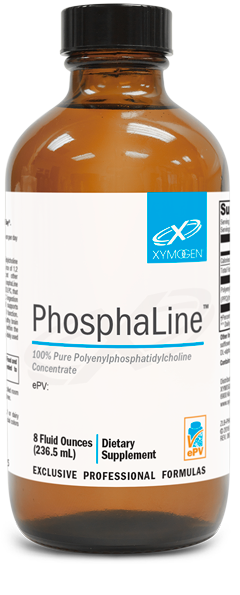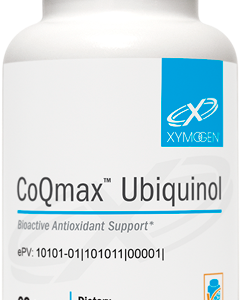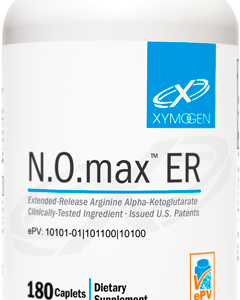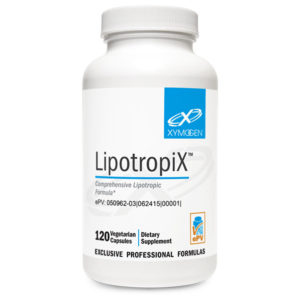Scientific Information/Data
Phospholipids are the basic building blocks of cellular membranes. Every phospholipid contains two fatty acid tails (triglycerides contain three) linked to a group of molecules containing phosphorus. The phosphorus-containing “head” of a phospholipid is hydrophilic; the “tails” are hydrophobic and love oil. When phospholipids come in contact with water, the hydrophobic tails line up soldier-fashion next to each other with the hydrophilic head groups on either side forming a very thin, flexible (or “fluid”), and partially permeable bilayer structure—the cell membrane.
The cell membrane is where virtually all the important metabolic reactions occur. But lowered phospholipid availability may sometimes limit these essential functions. While the body can biosynthesize phospholipids from other substances, the process requires many enzymes and a great deal of energy. Exogenous sources of phospholipids can supplement biosynthesis. Research suggests that supporting phospholipid availability is important in cellular protection and repair and in membrane fluidity.[1,2] Furthermore, scientific understanding of the importance of phospholipids in organ and system health continues to grow. As explained by Krosnjar et al, “A healthy cell membrane leads to healthy cells and then healthy tissue and then to healthy organs or body systems and finally, healthy bodies and minds.”*[3]
Phosphatidylcholine is a class of phospholipids that, while similar in many respects to other types of phospholipids, has some important health-promoting differences. The most distinguishable physical characteristics between simple phospholipids and phosphatidylcholine are the choline head and the unsaturated fatty acid chains that comprise the tail. Phosphatidylcholine is perhaps the most important molecule among tens of thousands of molecules that comprise a cell, accounting for nearly 50% of the cell membrane.*
Not only does phosphatidylcholine support healthy cell membrane composition and function, it also supports healthy choline levels and brain acetylcholine formation.[4] Furthermore, areas of research suggesting the health benefits that may be gained from phosphatidylcholine supplementation include liver function,[2,5] detoxification,[2,5] lipid metabolism and lipoprotein biosynthesis,[6,7] cytoprotection (gastric, beta cells),[8,9] and cytokine formation.*[10,11]
Polyenylphosphatidylcholine (PPC) is a polyunsaturated phosphatidylcholine extracted from soybeans. As an excellent source of phosphatidylcholine, PPC supplementation has been widely studied.[2,4,7-9,12] PhosphaLine provides a patented and purified source of 100% pure PPC. PPC is thought to be functionally superior to other forms of phosphatidylcholine because of its content of 1,2-dilinoleoylphosphatidylcholine (DLPC) and linoleic acid, which binds at the c1 and c2 positions of the DLPC molecule.*[2,3,11,12]
1,2 dilinoleoylphosphatidylcholine (DLPC) The quantitatively and qualitatively dominating molecule in PPC is DLPC, and PhosphaLine provides up to 52% DLPC. The presence of DLPC in PPC is the most important difference between PPC and typical phospholipids, such as triple lecithin and raw lecithin, and this difference is thought to be the main reason for the advantages PPC has over other phospholipids.[11,12] Increasing the DLPC content of cell membranes increases membrane fluidity and therefore positively influences membrane-dependent functions.[2] For instance, in vitro research suggests that DLPC can modulate the inflammatory response through nuclear erythroid 2-related factor 2 (Nrf2).[11] Other in vitro work revealed that PPC has strong antioxidant activity and that DLPC is mainly responsible for its protective effect.*[12]
Fatty Acids As stated earlier, the fatty acid tails of soy-derived PPC provide polyunsaturated fatty acids. Each of our cells can produce many of the lipid tails, such as saturated (palmitic and stearic) fatty acids and monounsaturated (oleic and nervonic) fatty acids, but not essential polyunsaturated fatty acids.*
*These statements have not been evaluated by the Food and Drug Administration. This product is not intended to diagnose, treat, cure, or prevent any disease.
References
1. Cui Z, Houweling M. Phosphatidylcholine and cell death. Biochim Biophys Acta. 2002 Dec 30;1585(2-3):87-96. Review. [PMID: 12531541]
2. Gundermann KJ, Kuenker A, Kuntz E, et al. Activity of essential phospholipids (EPL) from soybean in liver diseases. Pharmacol Rep. 2011;63(3):643-59. [PMID: 21857075]
3. Krosnjar S, Todić M, Bakić S, et al. Oral acute toxicity of polyenylphosphatidylcholine (PPC) in rats. Bosn J Basic Med Sci. 2005 Aug;5(3):63-68. [PMID: 16351585]
4. Magil SG, Zeisel SH, Wurtman RJ. Effects of ingesting soy or egg lecithins on serum choline, brain choline and brain acetylcholine. J Nutr. 1981 Jan;111(1):166-70. [PMID: 7192727]
5. Lieber CS. New concepts of the pathogenesis of alcoholic liver disease lead to novel treatments. Curr Gastroenterol Rep. 2004 Feb;6(1):60-65. [PMID: 14720455]
6. Cohn JS, Kamili A, Wat E, et al. Dietary phospholipids and intestinal cholesterol absorption. Nutrients. 2010 Feb;2(2):116-27. [PMID: 22254012]
7. Kirsten R, Heintz B, Nelson K, et al. Polyenylphosphatidylcholine improves the lipoprotein profile in diabetic patients. Int J Clin Pharmacol Ther. 1994 Feb;32(2):53-56. [PMID: 8004358]
8. Lee SH, Han YM, Min BH, et al. Cytoprotective effects of polyenoylphosphatidylcholine (PPC) on beta-cells during diabetic induction by streptozotocin. J Histochem Cytochem. 2003 Aug;51(8):1005-15. [PMID: 12871982]
9. Demirbilek S, Ersoy MO, Demirbilek S, et al. Effects of polyenylphosphatidylcholine on cytokines, nitrite/nitrate levels, antioxidant activity and lipid peroxidation in rats with sepsis. Intensive Care Med. 2004 Oct;30(10):1974-78. [PMID: 15045164]
10. Kovács T, Varga G, Erces D, et al. Dietary phosphatidylcholine supplementation attenuates inflammatory mucosal damage in a rat model of experimental colitis. Shock. 2012 Aug;38(2):177-85. [PMID: 22576006]
11. Son Y, Lee JH, Kim NH, et al. Dilinoleoylphosphatidylcholine induces the expression of the anti-inflammatory heme oxygenase-1 in RAW264.7 macrophages. Biofactors. 2010 May-Jun;36(3):210-15. [PMID: 20336709]
12. Aleynik SI, Leo MA, Takeshige U, et al. Dilinoleoylphosphatidylcholine is the active antioxidant of polyenylphosphatidylcholine. J Investig Med. 1999 Nov;47(9):507-12. [PMID: 10572382]







Reviews
There are no reviews yet.